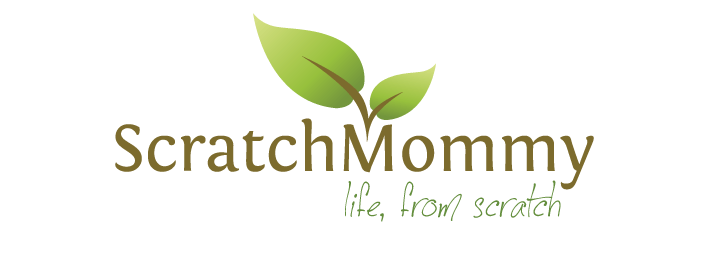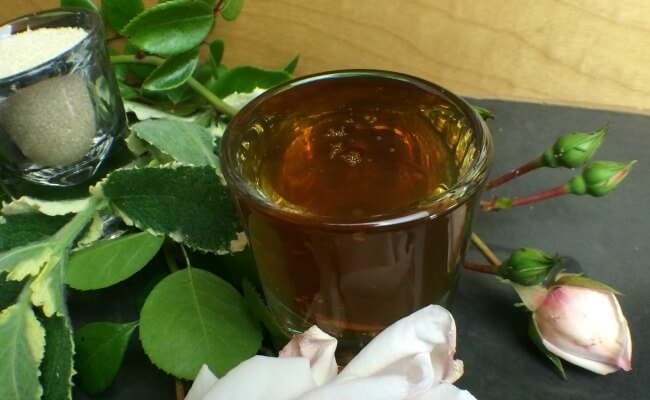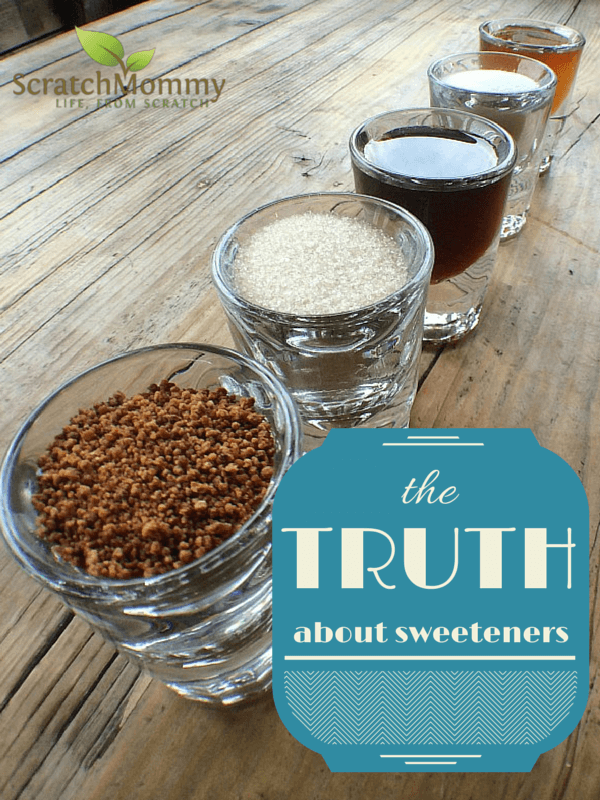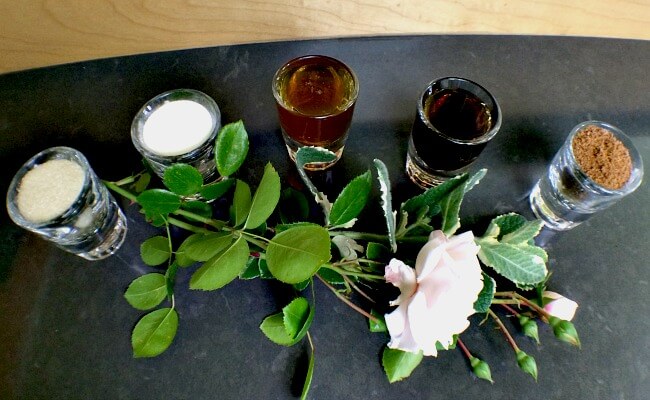Most packaged and processed foods contain sugar and/or corn syrup. They may be convenient, but at what cost? Our bodies deserve whole foods. By learning a few new recipes (such as sugar-free bars and muffins that can travel and freeze well) or by learning to substitute natural sweeteners in favorite recipes, we can ditch the packaged convenience foods and embrace better health!
After 3+ years off all sweeteners (save stevia), part of a successful effort to annihilate candida overgrowth, I am thankful to be eating local, raw honey once again. A 4+ year journey of grain-free, sugar-free life has taught me soooo much about cooking and baking without sugar, including how to flourish without it!
At the end of June I will publish my first cookbook, EAT BEAUTIFUL: Grain-free, Sugar-free and Loving It. I’d love to share with you here a lot of what I play out in the cookbook~ the versatility of sweeteners as well as their distinct roles. The truth about sweeteners can be confusing at times.
Let’s have a look at what they do, their personalities and nutritional properties. Then let’s see when you can interchange them and what their limitations are.
I will also mention why I don’t use agave, a product that has caused some confusion.
Sweetener Profiles
Sugar
Refined sugar has no nutrients at all; they are removed during the refinement process. The body is forced to draw on its own store of vitamins, minerals and enzymes to correct an imbalance that occurs when sugar is consumed. Eating nutrient-void foods also creates an over-acid condition that overtaxes the body as it seeks to correct the problem.
Dental decay, diabetes, gallstones, hypoglycemia, mental issues, addiction, adrenal fatigue, obesity and pathogen overgrowth are but a few of the known issues related to consumption or over-consumption of refined sweeteners.
Raw Honey
High in minerals and considered a whole food, honey is used as a sweetener in GAPS, Paleo and other sugar-free diets. It is not technically considered vegan because it comes from animals.
Pure Maple Syrup
A sweetener that is refined very little, pure maple syrup is a “whole food.” Therefore, it is an acceptable sweetener for people who avoid sugar and pursue a whole-foods diet. It is high in trace minerals.
Coconut Sugar
This is a natural sugar derived from the sap of the coconut palm tree. It is lower on the glycemic index than sugar but still contains moderately high levels of fructose and should be consumed in moderation.
Stevia
Stevia is a plant that any of us could easily grow in our gardens. There are three ways to enjoy and experiment with this natural sweetener: as an alcohol or glycerin-based tincture, as a white powder that is usually maltodextrin-based (corn derived), and as the actual green leaf in powdered, crushed, or fresh form. The tincture and the white powder are the most palatable forms, depending on the brand, to use in traditional desserts. (When buying the powdered form, look for varieties that do not contain maltodextrin.) The fresh green leaf of stevia is very good in tea.
Often I use stevia in conjunction with one other sweetener in a recipe. I have sometimes been asked why both sweeteners are needed.
I use stevia with honey, for instance, to reduce the overall amount of fructose and glucose in a recipe or so the honey flavor will not dominate.
I want the recipe to have a certain degree of sweetness but if the texture of the finished product will not be affected I use some stevia to achieve this level. Therefore, stevia is a healthful friend of sorts. It helps me to be healthier as I enjoy sweet treats.
Agave
This newly created sweetener, developed during the 1990s, is not as natural, diabetic-safe and raw as it is advertised to be. It is highly refined and has a profile similar to high-fructose corn syrup. The fructose contained in it is dangerous in terms of the many conditions it can cause: insulin resistance, mineral depletion, liver inflammation, high blood pressure, heart disease and more. Surprisingly, all brands of agave nectar have more fructose than corn syrup. It also has high levels of saponin, which can cause miscarriage.
Roles in Baked Goods and Other Treats
Sweetness
Maple Syrup and Coconut Sugar
In regard to their sweetness, maple syrup and coconut sugar can be substituted interchangeably, 1:1 in recipes, for sugar. Both maple syrup and coconut sugar are slightly less sweet than sugar, with their own molasses-like flavor nuances; but the outcome of treats sweetened with them will be more complex and delicious.
Honey
Honey is best decreased by 25-30% in any recipe when replacing sugar. It can be substituted 1:1 with the effect of a sweeter outcome and a moister crumb. In some cases I recommend this, when gooey and sweet is preferred, for instance, with a coffeecake or certain muffin recipes. However, be warned: honey has a distinct flavor. For this reason I often use it in conjunction with one other sweetener; so the baked good tastes sweet instead of tasting like honey.
Stevia
Stevia is 300 times sweeter than sugar by weight. The actual plant is about 15-40 times sweeter. Many recipes do well with 1/32-1/8 tsp of stevia powder or 10-20 drops of the tincture, depending on the recipe size.
Texture
Coconut Sugar
Coconut sugar can be substituted 1:1 for sugar in recipes, with no effect on the texture.
Maple Syrup
Due to the liquidity of maple syrup, if a baked good recipe contains liquid, for instance milk in a pancake recipe, it is best to decrease that quantity by 25% to compensate.
Honey
Honey, too, adds moisture to any baked good; so as with maple syrup, cutting back on any liquid ingredients a recipe may contain by 25% will help retain the desired texture.
To make ice cream with maple syrup or honey, reduce the amount of sweetener (sugar) called for by 25% and add 1-2 Tbsp real vanilla extract. The alcohol in the vanilla will help lower the freezing temperature, creating a creamier, less icy finished product.
Stevia
Sugar, honey, maple syrup, all “normal” sweeteners play a role in baked goods when it comes to texture. However, stevia does work well in many pancake and muffin-type recipes. If a recipe calls for 1 cup sugar, try using 1/8 tsp stevia powder or 20 drops of liquid stevia– if you like to experiment. Ice creams, however, will not succeed with stevia in place of sugar. Stevia does not lower the freezing temperature of the mix; and the finished product will end up being too icy and too hard if frozen. However, I love making ice cream-like smoothies with stevia alone as the sweetener. Here’s one of my favorites!
Leavening
Regarding leavening, or the rising agent used in a baked good, adding a scant additional amount of sifted baking soda, 1/4 tsp in most recipes, is beneficial when using honey in place of sugar.
Browning
When baking with honey, lower the oven temperature to 325 degrees Fahrenheit, and increase baking time accordingly, to keep the baked good from over-browning.
If a recipe utilizes high-heat baking, 400 degrees or higher, simply reduce the oven temperature by 25 degrees.
Experimenting
In the kitchen, as in all aspects of life, we are each endowed with a temperament. Some cooks love to learn by trial and error. Others prefer a recipe. I’m the experimental kind of cook, learning principles as I go. This post provides general guidelines for substituting sweeteners. If you want an exact conversion chart when substituting honey for sugar in a variety of baked good recipes, see Eat Beautiful’s conversion chart.
Either way, my hope for all of us is that life without sugar is more abundant. Sugar, for me, was an addiction. I could never get enough. I ate dessert everyday, even if it was just my 4 pm dark chocolate, to get me through the afternoon. It took me 3 years to stop missing sugar. Now, as I enjoy honey again, I feel balanced. I enjoy it; but I don’t need it or crave it.
We are all at different stages in our relationship with food. I hope this post is useful to you wherever you are. You don’t have to give up sugar entirely to make strides towards eating less of it. May you experience wonderful outcomes as you experiment with your sweetening options!




Comments 1
Thank you. I have recently learned I am diabetic and I’m looking for ways to replace sugar.